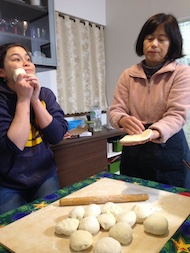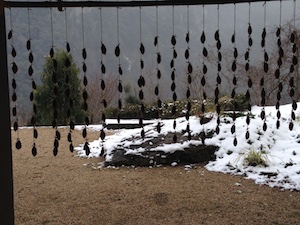Full Belly Break
I have family in Japan, living in Chiba City, about 45 minutes from Tokyo (using the efficient trains). During the Full Belly break, my husband and I had the wonderful experience of spending 2-weeks traveling with family, visiting Kyoto on the main island, and also several places on the smaller islands of Naoshima, Shikoku and Kyushu.
When we travel, we like to try new foods and avoid “westernized” restaurants. In Japan, this can result in experiencing startlingly new and foreign textures and flavors. Slimy, crunchy and chewy textures abound. Meals are usually presented as lots of small plates, rather than one main dish with sides. It was not at all uncommon to have a meal presented to our group at an Inn, or at a home we were visiting, for us to have no idea what some of the dishes were. Perhaps some form of soy? Or fish? Or maybe egg?
Most meals (including breakfast) feature pickled vegetables, some form of rice, and some form of fish – maybe grilled, maybe in the form of fish cakes, sometimes roe from cod or another fish. Fermented products are very common – miso, soy sauce, sake – and the fermenting agent used in many of these foods is koji which contains the spores of a fungus that is native only to the humid southeast and East Asian regions.
Daikon was a common part of our meals, and many different forms are available, including the red daikon that we grow at Full Belly. Pickled, dried and grated daikon were all common. “Pickles” in Japan don’t refer to cucumbers, nor do they refer to one type of treatment – there are several ways to pickle vegetables. In Japan, pickled things are called tsukemono.
We have always really liked Japanese cuisine, because it is full of fresh, seasonal vegetables. There is very little red meat, dairy or oil. But what we find truly wonderful in our visits to Japan is how strong and deep the food culture is. There is a tremendous diversity in the diet. Every region has its own food specialties, and there are strong food-based traditions associated with the New Year and other holidays. The people that we met seemed to think and talk about fruits, vegetables and cuisine almost as much as we did!
–Judith Redmond

Left: Making dumplings with family

Above: One of the plates at a dinner

Above: Visiting ume plum farmers

Left: Dried persimmons hanging in a window
